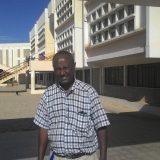Background: Osteoporotic fractures are among the non-communicable diseases imposing a growing morbidity and economic burden upon developing countries which have limited resources. Despite several studies from other countries, in Ethiopia sufficient information regarding the cost of illness related to osteoporotic fractures is not available.
Objective: The aim of the study was to estimate the direct and indirect costs attributable to osteoporotic fractures from a patient perspective
Methods: A retrospective review of 1,169 medical records of cases of osteoporosis related fracture that had been diagnosed and treated over a two year period were selected systematically and included in the analysis. Cost of illness was estimated after developing a checklist to extract the direct patient side medical costs from individual based data and indirect costs were estimated using a human capital approach.
Result: Analysis of the patient side direct medical costs of osteoporotic fracture according to the site of the fracture resulted in hip fractures identified as the most expensive fractures accounting for about 25% of the total (Median cost, was ETB 237.50 (US$14.09), and Mean=ETB 367.80 (US$ 21.83 per individual patient), while wrist fractures were the least expensive accounting for 6.2% (Median ETB 59.00 (US$3.50) and Mean ETB 59.40 (US$ 3.53 per individual patient). The average length of hospitalization was 22 days. The maximum number of days of hospitalization took place in cases with proximal femoral fracture and fractures of the hip and vertebrae, with a median of 25 days. For every single day increment in inpatient hospital stay there was an equivalent increment of ETB 23.27 (US$1.38). The hospital bed occupancy rate for the two years due to osteoporotic fractures was 6.8%. The total direct medical and indirect cost attributable to osteoporotic fractures during the two year period was ETB 1,314,979.00 (US$78,045.08). Of this total, direct medical costs and indirect costs incurred by the patients accounted for 49.2% and 50.9%, respectively.
Conclusion: The total patient side cost attributable to osteoporotic fractures incurred over a two year time period was over ETB 1.3 million ($US 78,000). Over 50% of the cost was related to absenteeism from work due to hospitalization. From the patients’ perspective the costs pose substantial burden on patients and their families. Hence, interventions to prevent osteoporosis should be implemented.
Key words: Osteoporotic fractures, Direct costs, Indirect costs, Ethiopia.
